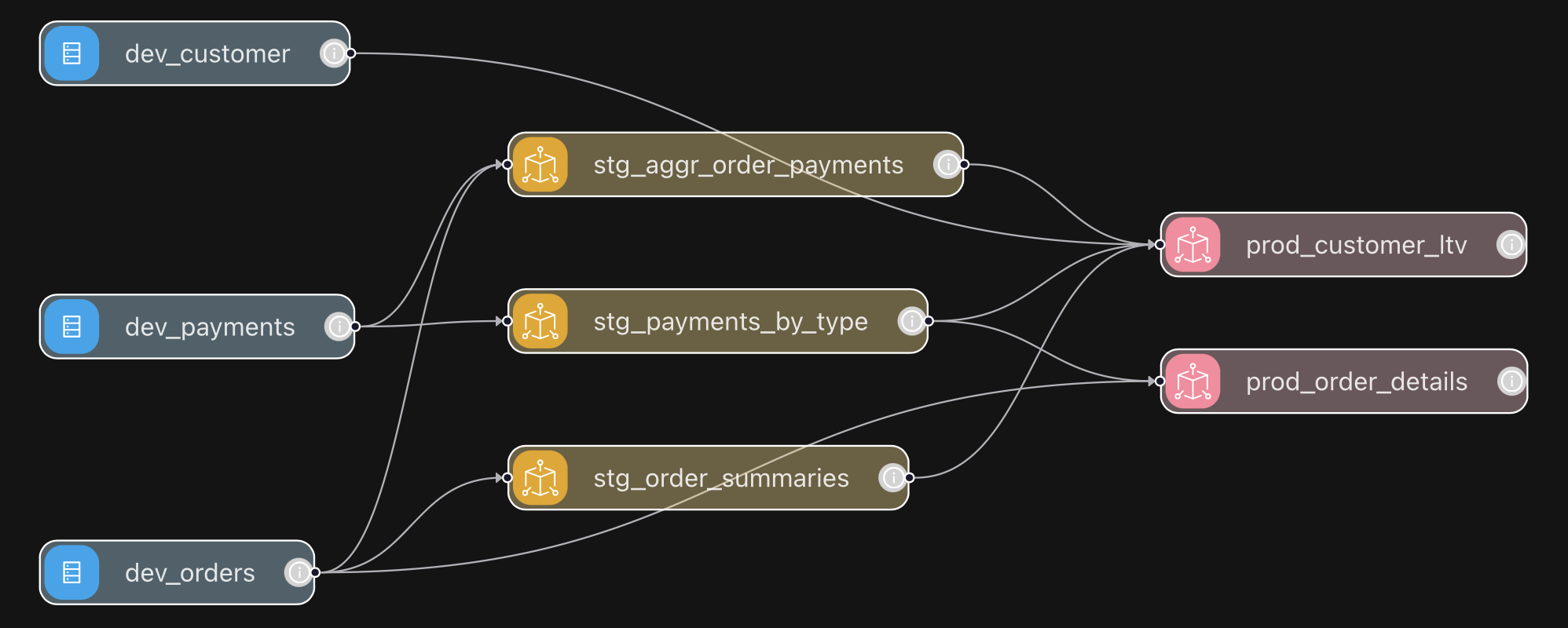About the Sample Project
We're big dbt fans and as an homage to them, we're using the same "hello world" example, Jaffle Shop that they use, but, we're using Visitran to transform the data. It doesn't matter if you've never used dbt before, or if you're unfamiliar with the Jaffle Shop example, you'll still be able to follow along with this quick start guide just perfectly fine. But, if you've gone through the Jaffle Shop example with dbt, you'll appreciate how Visitran's approach makes it ridiculously more productive. And, all this productivity is even without Visitran AI coming into play. To see how Visitran AI can make this even more productive, check out the Visitran AI Quick Start Guide.
Follow-along video
The Tables
The Jaffle Shop sample project uses three tables in the database:
raw_customers
id: Primary keyfirst_name: Customer's first namelast_name: Customer's last name
raw_orders
id: Primary keyuser_id: Foreign key referencing raw_customersorder_date: Date when the order was placedstatus: Order status
raw_payments
id: Primary keyorder_id: Foreign key referencing raw_orderspayment_method: Method of paymentamount: Payment amount
The Questions We'll Answer
From a business perspective, we want to know two main things:
- What payment methods were used for various orders? (model:
prod_order_details) - What is the customer lifetime value? (model:
prod_customer_ltv)
While building these models however, we'll build some intermediate models to promote reusability.
How we'll build out the models
The lineage of the models will be as follows:

The above is a screenshot of the lineage of the models in Visitran from a fully finalized version of the sample project.